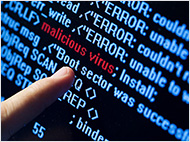Installing a New OS: What To Do If You Are Missing Partitions
- Published: May 28, 2014
- Updated: September 5, 2021
Reinstalling Windows or experimenting with alternative systems may lead to lost partitions. This article guides on what to do if you find yourself in a position where your disk is missing partitions with important data.

“Yesterday I’ve destroyed everything on my 1.5 TB drive with my own hands”, says one of our customers in a panic email to our support team. “I wanted to try Ubuntu on my laptop via dual boot. It was supposed to be installed in an empty space on my disk. Well, it seems that during the setup I made the installer create one big partition occupying the whole hard drive. Now I have Ubuntu but no dual-boot, no Windows partitions and, most importantly, none of my files. Help!”
Our support team handles endless variations of the same tale every other day. Partitions get lost or are removed when installing a new version of Windows, trying Linux or Ubuntu, or experimenting with dual boot. Disks missing, data unavailable.
If you find yourself in a similar situation, just stop. Don’t do anything else with your system, or you may destroy any data that might still remain on that disk. The easiest way (for us) would be physically removing the disk, connecting it to a different computer and running a data recovery tool on it. However, not everyone has a spare computer, and not everyone is familiar with taking disks out and attaching them to another system.
So, we can suggest using a bootable recovery drive. Power off your computer and boot from a recovery media if you have one. If you don’t, use a different computer to create one.

Making a Bootable Data Recovery Media
No, we won’t provide a step-by-step guide on making a bootable flash drive with a data recovery tool on it. You may use one of the many tutorials and one of the many flash preparation tools that allow making bootable Windows on a USB flash drive. Just google “make bootable windows recovery flash”, and the very first entry will have a detailed overview. Depending on version of Windows you use, the process may be easy or very easy.
With Windows Vista and Windows 7, you’ll need to copy some hidden files, and create a bootable flash drive with a third-party tool (we at East Imperial Soft use Rufus, but there are also RMPrepUSB, UNetbootin, Universal USB Installer and Windows 7 USB download tool).
If you are using Windows 8 or 8.1, you can simply use its built-in tool for creating a USB recovery drive. The tool is called “Create a recovery drive”.
Install a Data Recovery Tool
It’s really important to have a data recovery tool already installed on that bootable flash drive. Download Magic Partition Recovery and install it onto the newly created USB recovery drive. You’ll need to purchase a registration key in order to use the product.
On a piece of paper, write down the path where the data recovery tool was installed. Open that folder, and write down the name of the application itself (e.g. “dpart.exe”). This is what you’ll need to type in the command line when booting from the recovery media in order to launch the recovery tool.
Write down your registration key as well: you’ll need it when running the data recovery tool from that flash drive.
Recovering Data
When booting from the recovery media, you’ll see a window with options. Note that any of the automated recovery options won’t help you get your data back. Just click on the “command line” option, then launch your data recovery tool from the command line. This is where you’ll use all the information you wrote down on that piece of paper.
The rest is easy. Use Magic Partition Recovery to scan your hard drive, locate deleted disk volumes and recover the files.
Like This Article?
Stay Tuned






Comments